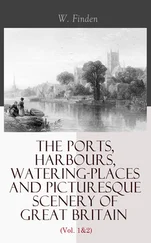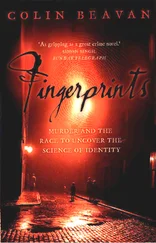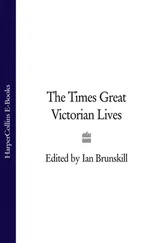'Yes, sir.'
'Very nicely indeed?'
'Yes, sir.'
'Perhaps you have been wearing it?' This was greeted with more laughter.
'It's a very serious thing, sir, who done the murder.'
Mrs Dallimore was a real-life version of a nineteenth-century fictional heroine: the amateur female detective, as featured in W.S. Hayward's The Experiences of a Lady Detective (1861) and Andrew Forrester's The Female Detective (1864). Her investigations, like those of Mrs Bucket in Bleak House, were as spirited and probing as the inquiries made by her policeman husband and his fellow officers. Inspector Bucket, though, refers to his wife, respectfully, as 'a lady of natural detective genius', while Mrs Dallimore was treated as a gossip and a fool. In theory, detection was understood as a distinctly feminine talent - women had the opportunities for 'intimate watching', said Forrester, and an instinct for deciphering what they saw. In practice, a woman who indulged in detection was perceived as a sister to Mrs Snagsby in Bleak House, whose jealous curiosity drives her 'to nocturnal examinations of Mr Snagsby's pockets; to secret perusals of Mr Snagsby's letters . . . to watching at windows, listenings behind doors, and a general putting of this and that together by the wrong end'.
In his summing-up on Thursday, Ribton said he had 'seldom seen anything so disgraceful in a witness as the evidence of the woman Dallimore, or more calculated to send a thrill of horror through everybody, and make them fear for their lives, their liberties, their characters'. Mrs Dallimore had taken Whicher's place as the spy incarnate. Ribton dealt with Gough's contradictions about the blanket by suggesting that she had noticed its loss early in the day and then, in the confusion and distress of the morning, had forgotten she had done so. He dismissed the fact that the flannel fitted her, arguing that it might in any case have no connection to the crime.
The magistrates released the nursemaid, to wild applause, on condition that her family put up a PS100 bond to ensure that she would return for further examination if necessary. This was paid by one of Gough's two uncles, who had come to take her home. The party caught the last train to Paddington, via Chippenham, which left Trowbridge at 7.50 p.m. At every stop along the route people were gathered on the station platforms to peer in through the carriage windows.
'If the late Edgar Poe had sat down to invent a tale of mystery,' observed The Times two days after Elizabeth Gough's release, 'he could not have imagined anything more strange and perplexing . . . The matter - remains still as dark as ever. If three or four persons meet they are nearly sure to have so many different theories . . . People are unquiet . . . There has been an uncontrollable desire to get at the bottom of the Road childmurder.'
The unrest and disorder were in evidence in Road the next day. On Sunday, 7 October, six well-dressed, moustachioed men rode into the grounds of Road Hill House laughing, smoking and joking. One sandy-haired fellow rode a black horse and wore a black suit and a Scotch cap; another, on a grey horse, had light frizzy hair. They saw a girl at a window and shouted, 'There is Constance!' When confronted by Samuel Kent they took off.
As Mr and Mrs Kent made their way to Christ Church the same day a large party yelled and hooted at them: 'Who murdered his boy?' 'Who killed the child?' At this, Mrs Kent almost collapsed in distress. When police surveillance of Road Hill House was lifted the next week, the Somerset and Wilts Journal reported, 'inquisitive gentlefolk' took to driving through the Kents' grounds. According to the Western Daily Press, two policemen continued to accompany Samuel to Christ Church each Sunday.
The Manchester Examiner , identifying another species of thrill-seeker, claimed that Constance Kent had received several offers of marriage. The Somerset and Wilts Journal denied this: 'She has had unnumbered invitations from strangers to visit them, however, some being from the aristocracy.' This newspaper, despite hinting at Constance's guilt, repeated the idea that Whicher's accusation of her might prove a crime much worse than murder: 'If Mr Whicher's opinion was wrong, then beyond all question a crime infinitely exceeding in enormity the murder of Francis Saville Kent has been since committed, from which, Constance, poor girl, will suffer till her dying day.'
The local police continued to hound Elizabeth Gough. At the end of October Superintendent Wolfe passed on to Scotland Yard a rumour that she had once been dismissed from service in Knightsbridge for 'harbouring soldiers'. Whicher tersely reported back that Wolfe's information 'appears incorrect' - there was no evidence of the nursemaid ever having been employed in that part of London. A few weeks later it emerged that a servant called Elizabeth Gough, with a missing front tooth, had once been dismissed for 'misconduct' from a house-hold in Eton, Berkshire. The Eton employer went to the Gough family bakery in Isleworth to identify her, Whicher reported, but discovered that she was not his former maid.
When Gough was accused in the Wiltshire magistrates' court, Samuel Kent was indirectly accused too: 'If Mr Kent has not yet been put formally upon his trial,' noted Joseph Stapleton, 'he has not the less been subjected to its infamy by the convenient proxy of Elizabeth Gough.' After the nursemaid's release, both Joshua Parsons and Mrs Kent - sensing that the feeling against Samuel was running higher than ever - made statements to the press in his defence. Mrs Kent said that Samuel had not left her side on the night of Saville's death; she could be sure of this because her advanced pregnancy made her sleep very lightly. Parsons said that Samuel's 'mind was so affected by intense excitement, and by the persecution he had undergone, that no amount of reliance ought to be placed in any statements which under such circumstances he might make'. He thought his mental state 'very precarious'. Stapleton made similar excuses for his friend: Samuel was 'stupefied and confused' by his son's death, the surgeon argued, so that 'his mind seemed to wander irregularly, discursively, and unsteadily over a large field'.
Dickens thought that Gough and her employer were the killers. The novelist had lost faith in the detectives' powers of deduction. In a letter to Wilkie Collins on 24 October he sketched his theory: 'Mr Kent, intriguing with the nursemaid, poor little child wakes in Crib, and sits up, contemplating blissful proceedings. Nursemaid strangles him then and there. Mr Kent gashes body, to mystify discoverers, and disposes of same.'
The press was disillusioned with detection. The Saturday Review in September dismissed even Poe's stories as 'delusions' of cleverness, 'playing chess with the right hand against the left'. As for live detectives, 'they are very ordinary people, who are worth nothing when they are taken beyond their routine'. The consensus in Road, according to the Western Daily Press, was that only a confession would put an end to the uncertainty, and the confession might be a long time coming: 'Ay,' the villagers predicted, 'this'll be a deathbed job.'
The idea took hold that England had become prey to outbreaks of weird violence. Some blamed the weather. 'How is it that the daily newspapers are stuffed so full of horrors just now?' asked the magazine Once a Week. The broadsheets, it estimated, were devoting sixteen to twenty columns a day to murder. 'People . . . have said . . . that the long continuance of bad weather - the eternal gloom - the perennial rain of the last twelvemonth, has inspired a certain degree of moroseness and acrimony into the minds of our countrymen.'
A freak storm had hit Wiltshire as the year dawned. On 30 December 1859 a hurricane descended on Calne, twenty miles or so north-east of Road, and stripped a six-mile swathe of land in five minutes: the tornado ripped trees out of the earth and snapped them like matchsticks, upending their trunks and ramming the limbs into the ground; it tore the roofs off cottages and hurled them aside; it threw a wagon over a hedge. Giant hailstones fell from the sky and slashed the hands of those who tried to catch them; the chunks of ice were shaped like crosses, cogs and spears, according to a local woman, and one took the form of a small child. In January tourists came to look on the scene of the storm, as they came towards the close of the year to look at the place in which Saville Kent had died.
Читать дальше












